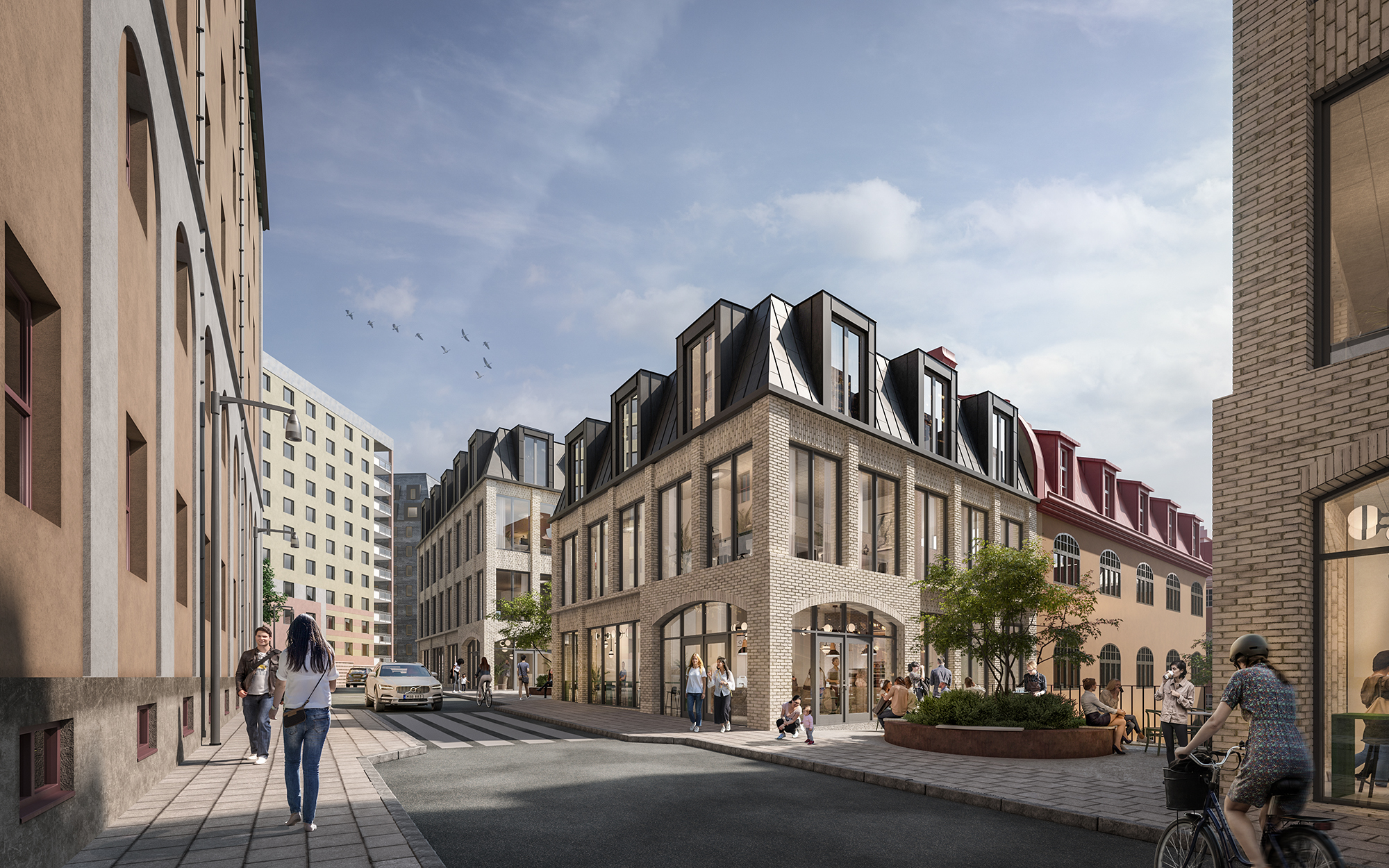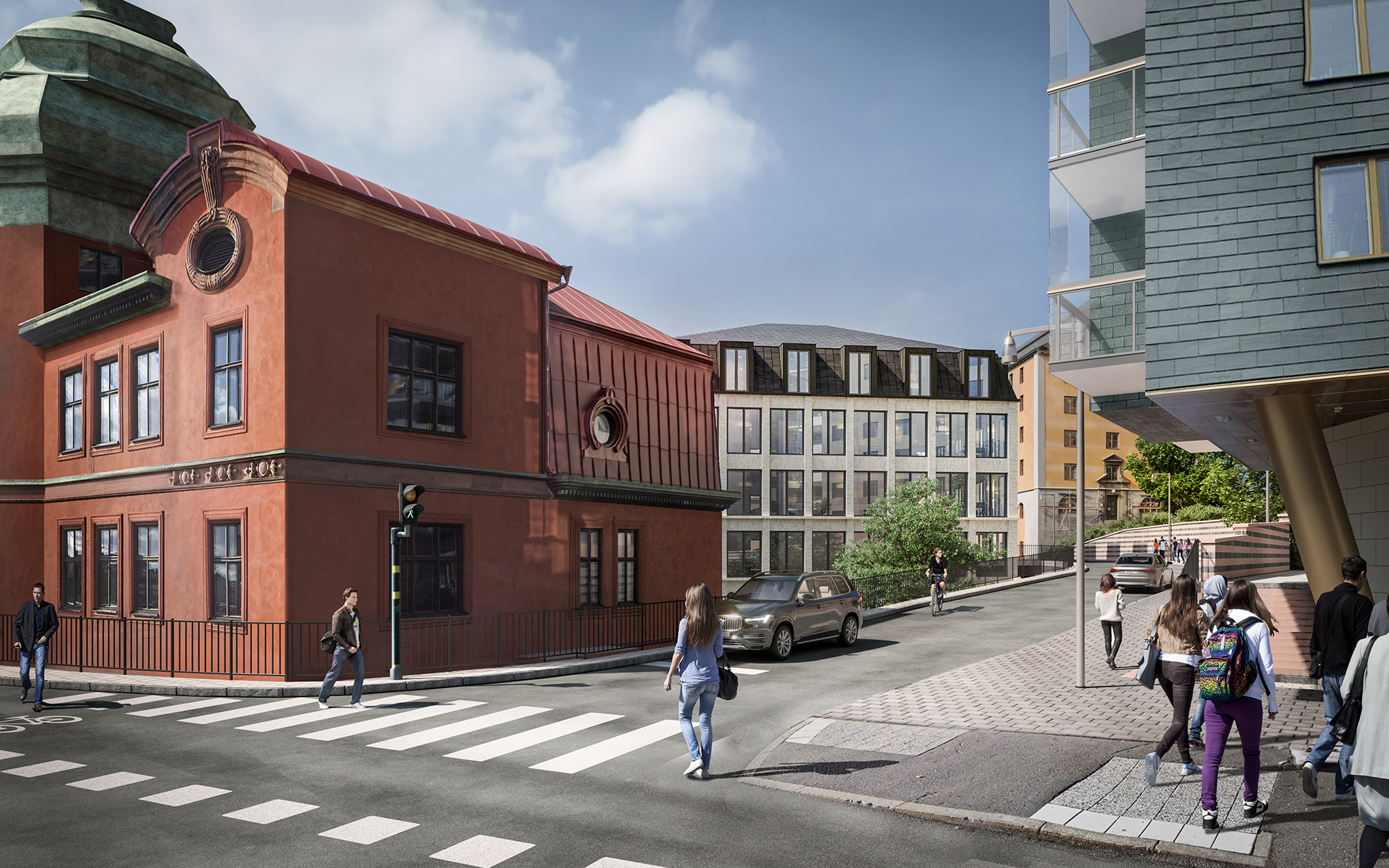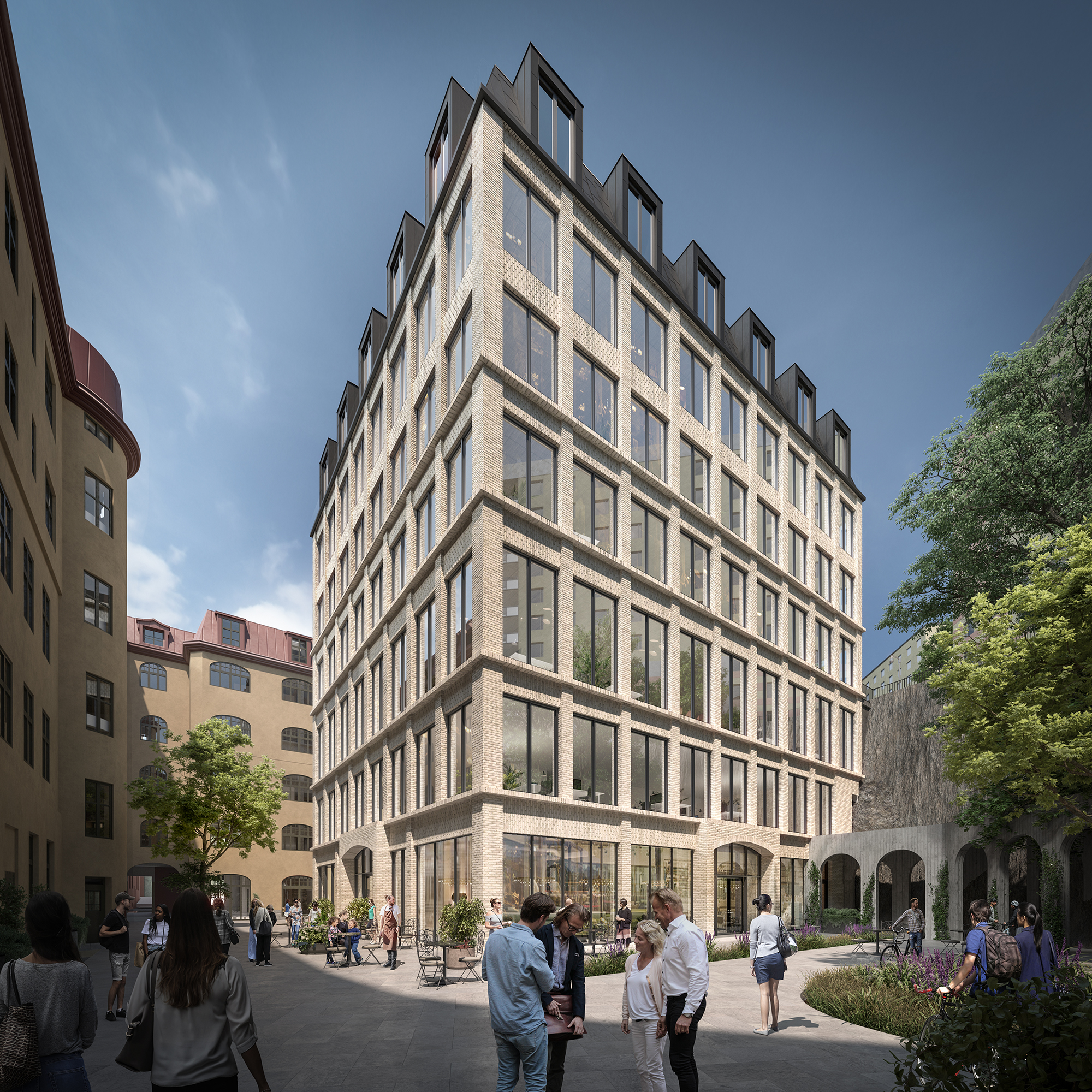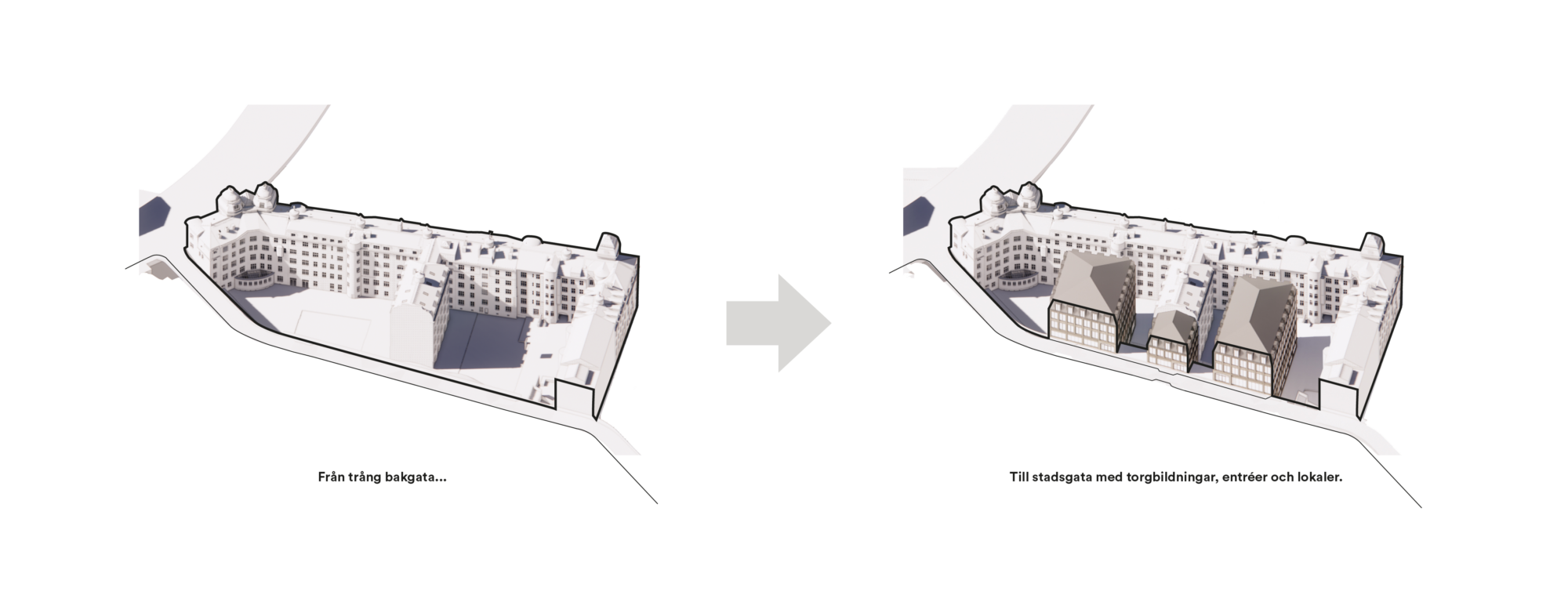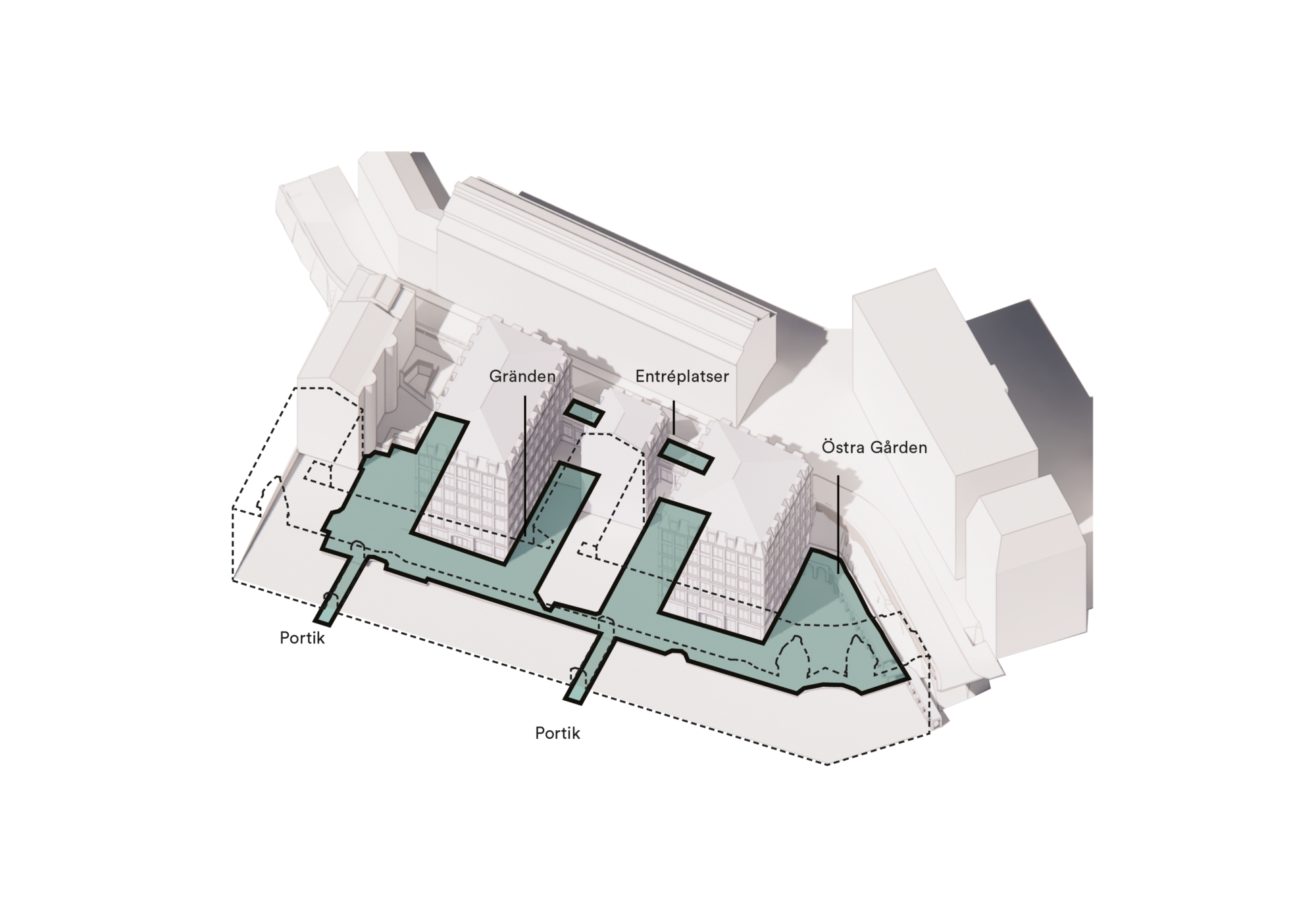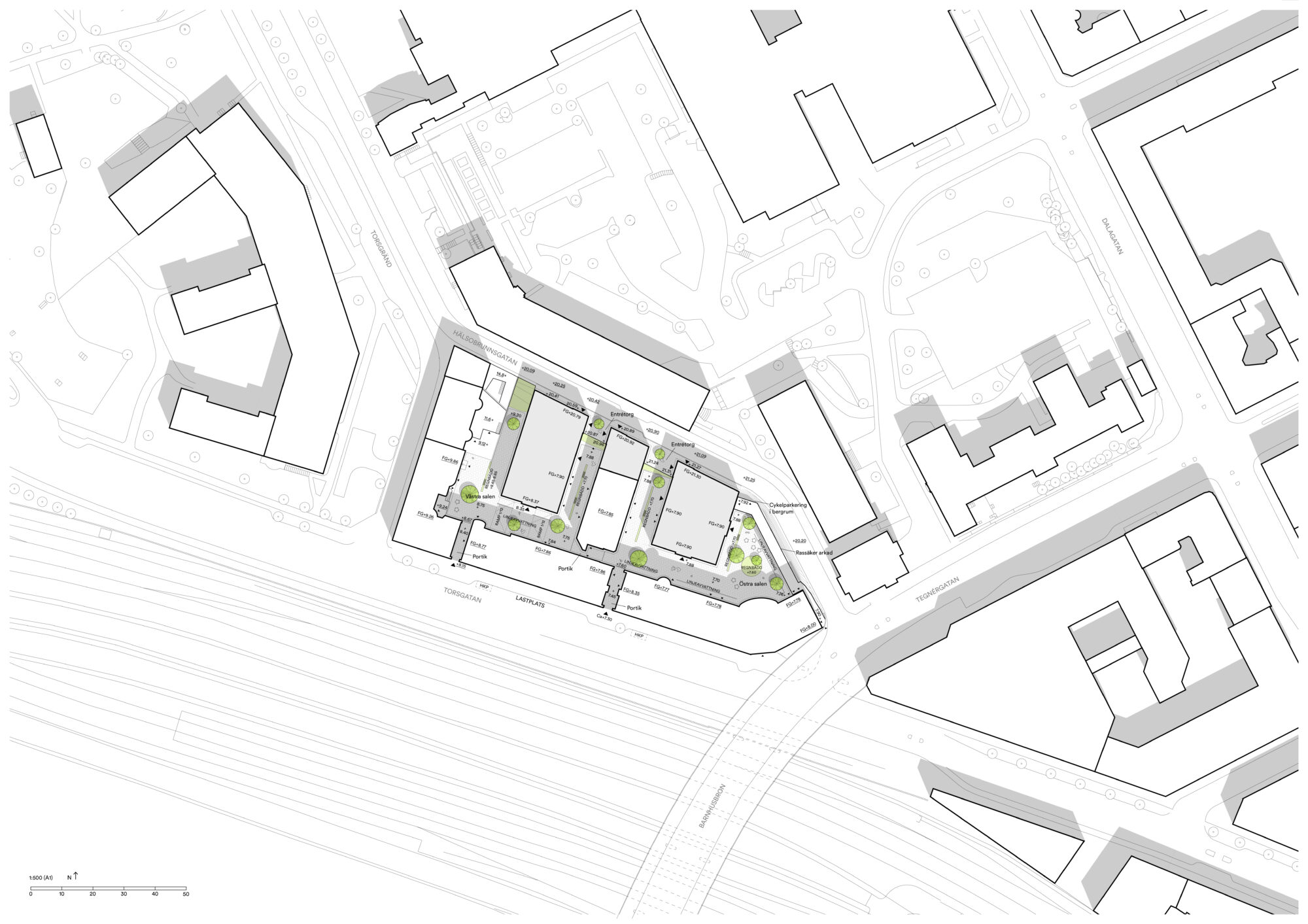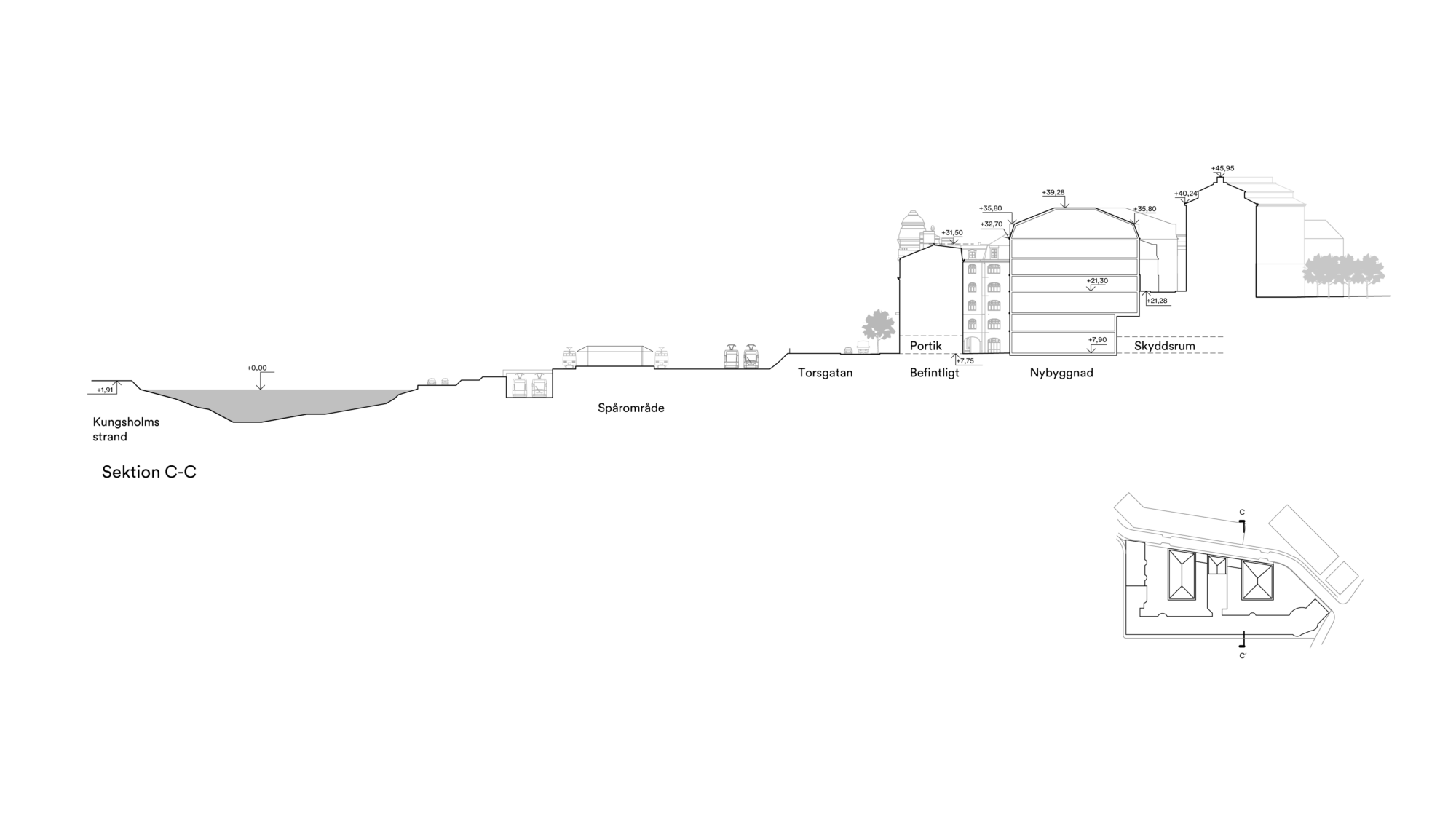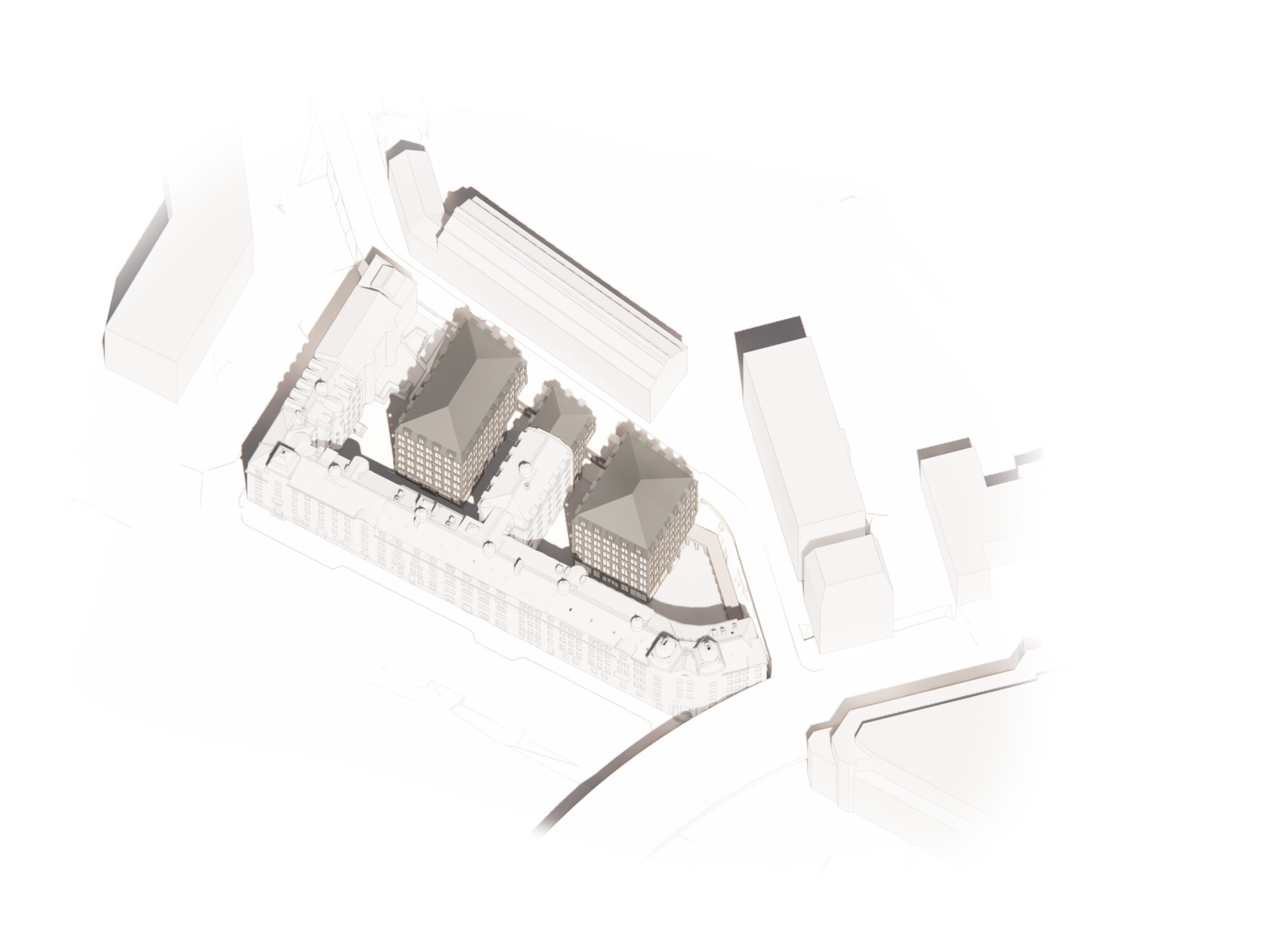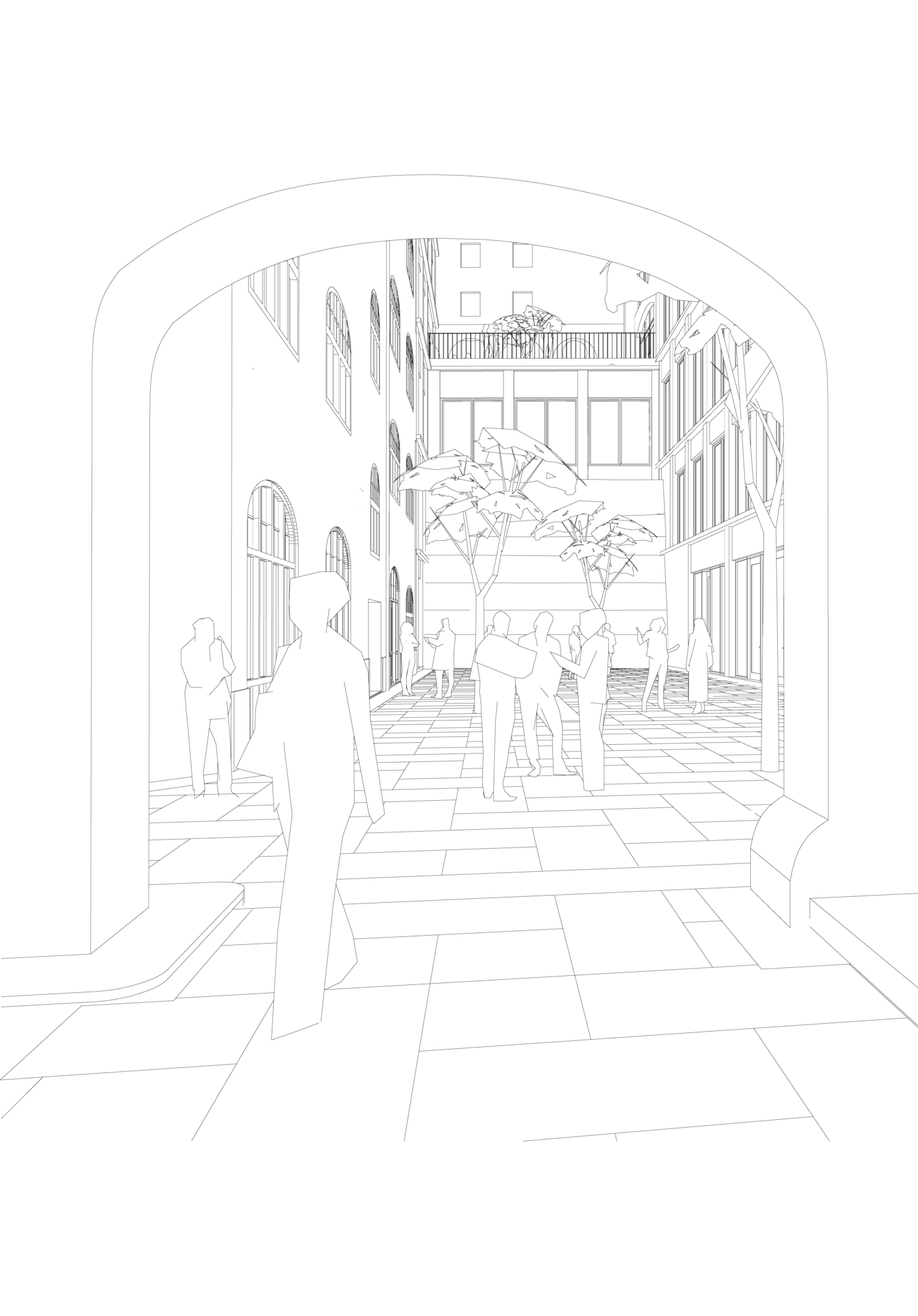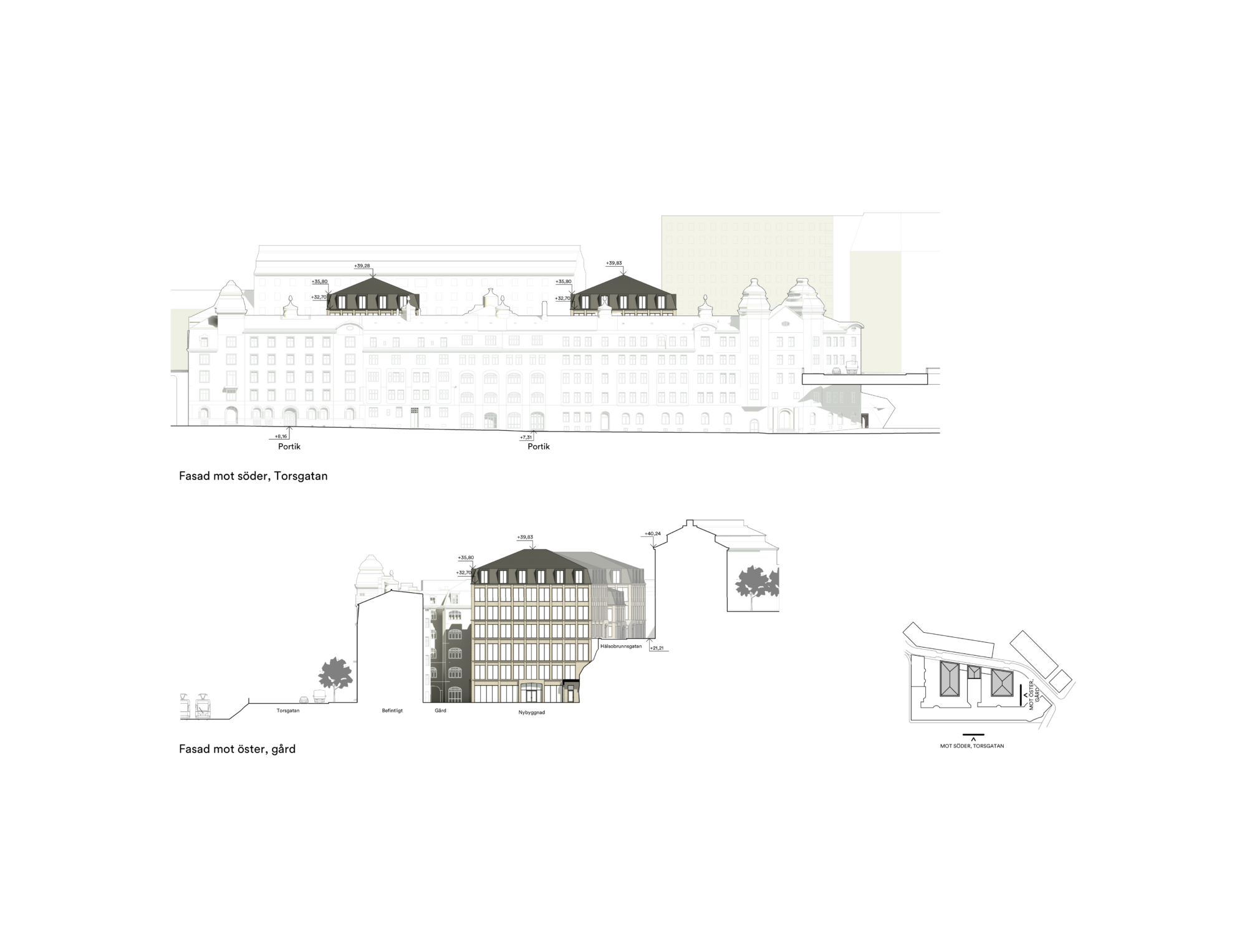Kv. Öskaret 1
In central Stockholm, we are developing an attractive neighborhood where modern offices, historic workshop environments and retail meet around interconnected public courtyards. Kv. Öskaret will be a destination with international appeal!
The later added and less valuable 1930s wing, which has recently been demolished, enables two new courtyard volumes to be placed on either side of the beautiful workshop wing. This will create a sequence of new courtyard spaces while reinforcing the undeveloped side of Hälsobrunnsgatan with new street-level volumes. The new volumes are designed as two powerful six-story solitaires that complement the block both at courtyard level and towards Hälsobrunnsgatan. The difference in height (Brunkebergsåsen) means that Hälsobrunnsgatan has three floors above ground and the courtyard six floors. The workshop wing is also extended towards Hälsobrunnsgatan by two floors, which creates a rhythm in the urban space. The volumes are finished with broken and hipped roofs with dormers that rise gently above the roofscape of the original building without competing with its pinnacles and towers..
FOJAB was commissioned to renovate and develop the building into a modern office building. Great emphasis has been placed on highlighting the building's original qualities and preserving the culturally valuable parts of the building. New possible building rights for offices have also been identified on the property.
Developing the site
New volumes will be added to the property with the vision of creating a whole new block of mixed content grouped around several public courtyards, linked to each other by porticos and passages. Inspiration has been drawn from courtyard environments in Berlin and Paris. The programming of the ground floors and courtyards will help to strengthen the connection to Torsgatan and thus make it more attractive.
Hälsobrunnsgatan is widened with a new sidewalk and given a more urban character. New volumes are placed along the street with office entrances and possible premises. Between the new volumes, smaller plazas are created that function as entrance squares. From Hälsobrunnsgatan, the courtyards are accessed via internal elevators and stairs. This enables completely new connections between Hälsobrunnsgatan, the courtyards and Torsgatan.
Design
The volumetry and design of the new buildings are based on the surroundings, the original building and the history of the site. The extent of the volumes in plan is given by the surrounding buildings and the new sequence of courtyards to be created. The elevation is based on the level of Hälsobrunnsgatan and to be able to offer an urban and content-rich ground floor facing the street with a good ceiling height. Hälsobrunnsgatan will then have a two- and three-storey scale with a carefully worked roof landscape that, together with the "Bobergska towers", creates a characterful ensemble.
The complexity of the Boberg and Frumerie gasworks building inspires the design of the new volumes. The building is elegant, detailed and representative in the administration section but more industrial and raw in the workshop section. The old brick gas bell on the adjacent property is also a source of inspiration.
The new buildings are designed as free-standing, cohesive volumes with a tripartite base, middle section and end in the form of dormers in the classic Stockholm tradition. The buildings are connected by link buildings on one level, two floors above the courtyard level, which enables an internal communication path. On top of the roofs of the links, places are created at the level of Hälsobrunnsgatan.
An overarching geometric grid creates structure and stability in the facades. The facade is given relief through indentations, differences and details. Individual building elements such as entrances, penthouses and eaves are accentuated, creating variation and excitement. The facade material is light brick with different treatments and character. The roofs are made of dark gray sheet metal in harmony with the brick facades. The roofscape should be clearly distinguishable from the red roof of the original building and the black roof behind it in Sabbatsberg 26. The new buildings are linked to the cultural history and architecture of the Öskaret district and its surroundings, but stand as clear and contemporary imprints of our time.
The new buildings relate to the cultural history and architecture of Kv. Öskaret and its neighborhood but stand as clear and contemporary imprints of our time.
Landscape
The main idea is that a continuous floor connects the different courtyard spaces. The materials are timeless natural materials and characterful trees that form a beautiful canopy. On the hillside, plantings will provide greenery, which together with the arcade entrance in the east creates a framing character. At Hälsobrunnsgatan, the sidewalk will be extended into two smaller plazas that serve as entrance squares to the new buildings.
The encounter with the block should signal an inviting, welcoming character to the inner parts and functions of the block. The porticos facing Torsgatan provide fine insights into the neighborhood that invite visitors. From here, the new volumes and welcoming greenery in the courtyards in the form of trees can be seen. The entrance areas towards Hälsobrunnsgatan are given a simple design with trees and seating.
The eastern and western courtyards are given a coherent design and a continuous floor in the form of natural stone ground material. The eastern courtyard will make it possible for the activities in the neighborhood to use the courtyard, either in the larger landscaped area or in connection with the arcade access.
Read more: This is how we have developed the Boberg and Frumerie heritage building on the Torsgatan 26.
